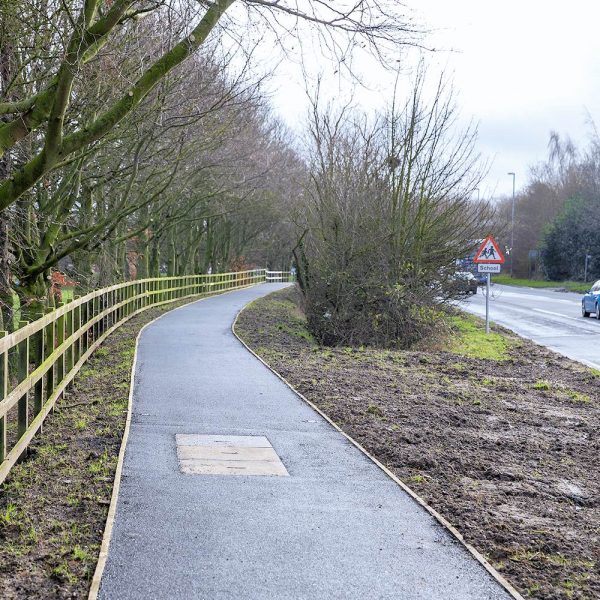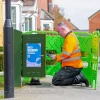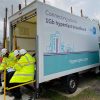Bus and Cycleways in Cambridgeshire UK Help Spread Full Fibre

The Connecting Cambridgeshire programme in England, which is led by the Cambridgeshire & Peterborough Combined Authority, has today highlighted another example of how their “Dig Once” policy is helping to accelerate the roll-out of gigabit broadband – by ensuring new bus and cycleways are pre-built with fibre ducting.
So far over 21km of new fibre ducting is in the process of being made available, or is planned during the construction of new road and cycleway schemes by 2025. The infrastructure can be accessed, on a commercial basis, via Light Blue Fibre, a Joint Venture between Cambridgeshire County Council and the University of Cambridge – making it quicker and easier for operators to extend gigabit networks and reduce costly street works.
In the previous update (here), we highlighted the positive impact of recent road and junction building schemes on this approach, including major transport upgrades such as those carried out by the GCP on Histon Road and Milton Road in Cambridge. But planned cycle paths for Linton and Papworth are now starting to play their part too.
Advertisement
Installing fibre ducting during the construction of bus and cycleway schemes in Milton Road is also estimated to have saved over 4 tonnes of CO2e emissions in the reduction of materials used per km of duct compared to retrospectively fitting it.
The latest broadband operator to make use of all this is Gigaclear, which is working to reach an additional 2,000 premises by harnessing the plans for Linton Greenway – one of 12 greenways proposed across the Greater Cambridge area.
The work brought an opportunity to integrate 1.4 km of fibre ducting in the cycleway as it passes Hildersham. Combined with existing ducting from Light Blue Fibre, this has enabled Gigaclear to extend its rollout of gigabit broadband along an 11 km stretch, without having to retrofit ducting in the road, saving time and money.
Gary Darvill, Gigaclear Project Manager, said:
“We welcome Cambridgeshire’s ‘Dig Once’ policy because, where it is possible to use existing infrastructure, it makes sense to do so on so many different levels – environmentally, financially and by reducing disruption!
In this situation, in order to support our roll-out of full fibre broadband to underserved rural communities in the county, we needed to run our fibre optic cables along a 9km stretch from Great Chesterford to provide more than 750 homes in Great Abington with a fast and reliable broadband service.
Then, from Great Abington we are able to take our network a further two kilometres to the community in Linton where we’re planning to connect more than 2,000 homes and businesses.”
The availability of such ducting will only increase over the coming years as more of the local infrastructure projects reach completion, which should hopefully continue to benefit the local area. The UK could definitely do with more projects like this, which harness some foresight to ensure duct space for future uses is deployed at the same time as new transport links.
Advertisement
The work forms part of the local Digital Connectivity Infrastructure Strategy 2021-2025 for Cambridgeshire and Peterborough.
Mark is a professional technology writer, IT consultant and computer engineer from Dorset (England), he also founded ISPreview in 1999 and enjoys analysing the latest telecoms and broadband developments. Find me on X (Twitter), Mastodon, Facebook, BlueSky, Threads.net and Linkedin.
« Council Suspend MS3’s Full Fibre Poles Rollout in Hedon Over Safety























































Good to see someone’s thinking ahead and showing a bit of common sense for a change.
Indeed well said
Meanwhile in other part of Cambs.
1. OFNL closing road to dig across.
2. a week later some contractor digging in exactly the same place to supply power for OFNL cabinet.
3. Month later another contractor resurfacing after contractor pulling electric cable for OFNL.